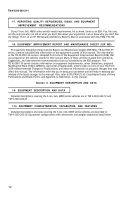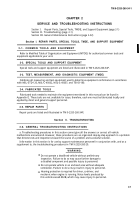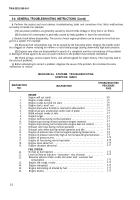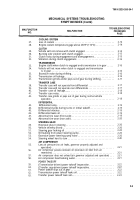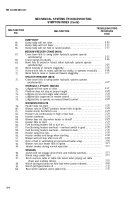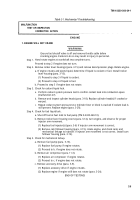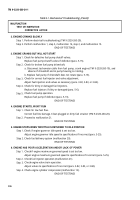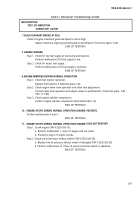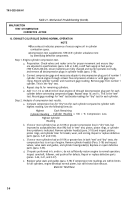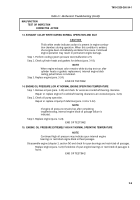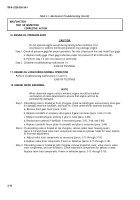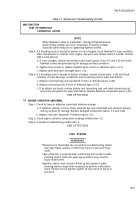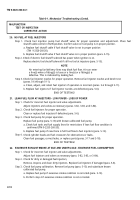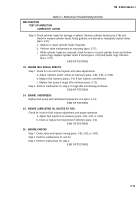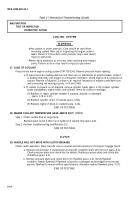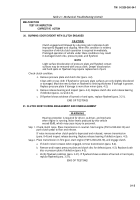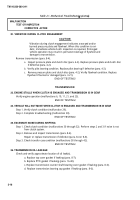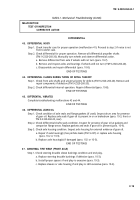TM-9-2320-260-34-1 - Page 24 of 657
TM 9-2320-260-34-1
Table 2-1. Mechanical Troubleshooting (Contd).
MALFUNCTION
TEST OR INSPECTION
CORRECTIVE ACTION
16. ENGINE OIL PRESSURE ZERO
CAUTION
Do not operate engine except during testing when condition of no
oil pressure is evident. Continued operation may damage engine.
Step 1. Check oil pressure gage for proper operation. Tee into oil pressure line and install test gage.
a. Replace faulty gage if test gage indicates proper oil pressure (TM 9-2320-260-20).
b. Perform step 2 if zero oil pressure is confirmed.
Step 2. Complete troubleshooting malfunction 14.
END OF TESTING!
17. ENGINE OIL LOSS DURING NORMAL OPERATION
Perform troubleshooting malfunctions 12 and 14.
END OF TESTING!
18. ENGINE NOISE ABNORMAL
NOTE
When abnormal engine noise is evident, engine should be checked
and location of noise determined to ensure that engine will not be
permanently damaged.
Step 1. If knocking noise is located at front of engine, check camshaft gear and accessory drive gear
for damage, excessive backlash, and loose fit. Check camshaft for excessive end play.
a. Remove front gear cover (para. 3-33).
b. Replace camshaft or accessory drive gears if gears are loose (para. 3-44 or 3-32).
c. Replace crankshaft gear and key if gear is loose (para. 3-48).
d. Replace worn gear(s) if backlash is excessive (paras. 3-42, 3-44, and 3-48).
e. Replace camshaft thrust plate if camshaft end play is excessive (para. 3-44).
Step 2. If a knocking noise is located at top of engine, remove rocker lever housing covers
(para. 3-14) and check valve train components mounted on cylinder heads for wear, defects,
or incorrect adjustment.
a. Adjust valve train components as necessary (paras. 3-15 through 3-18).
b. Replace valve train components if worn or defective (paras. 3-15 through 3-18).
Step 3. If knocking noise is located at side of engine, remove inspection cover, valve covers, valve
train components, and cam followers. Check valve train components for defects or wear.
Replace valve train components if worn or defective (paras. 3-15 through 3-18).
2-10
Back to Top

